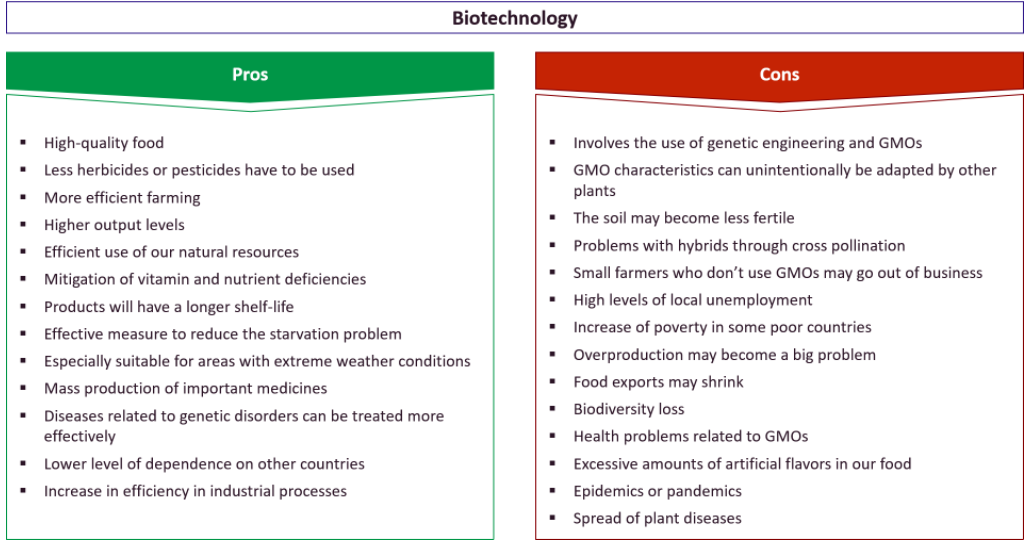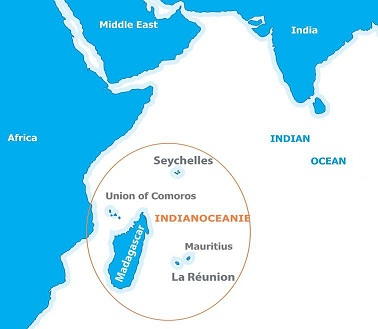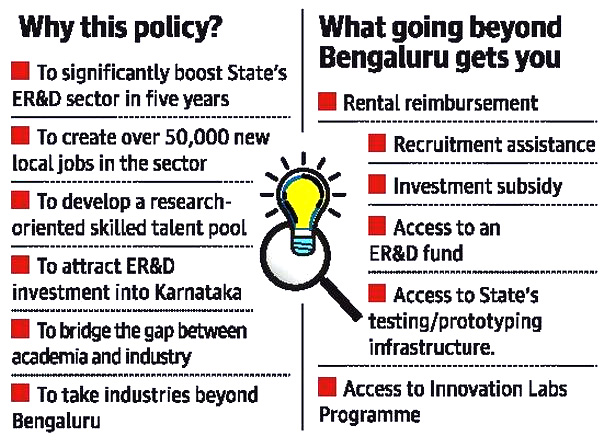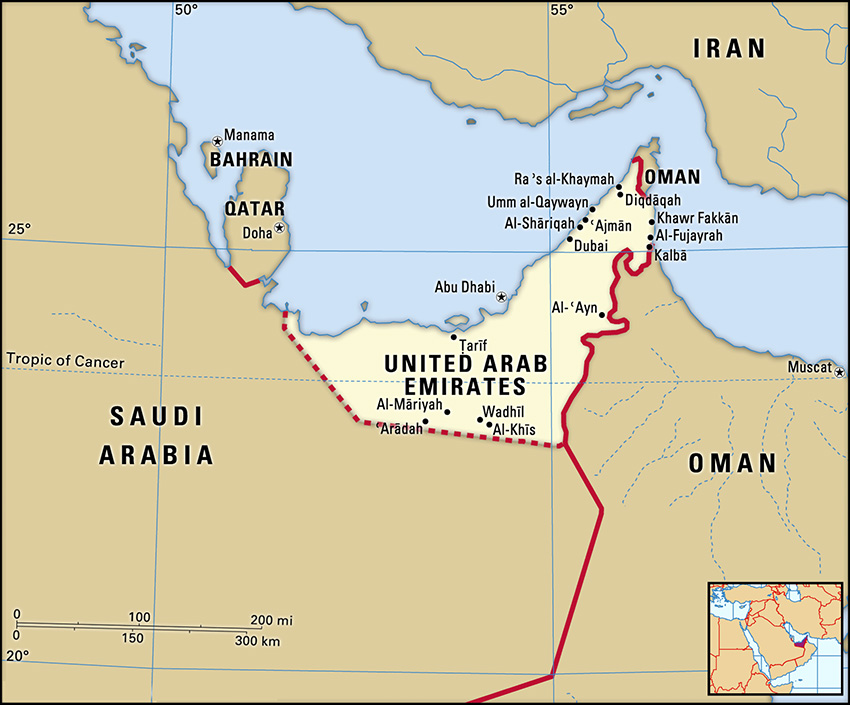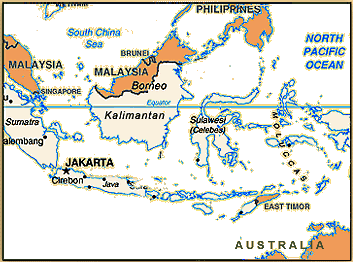Global Bio-India-2021
Why in News
Recently, the Union Minister for Health & Family Welfare inaugurated the second edition of Global Bio-India-2021 in New Delhi through virtual mode.
- It showcases the strength and opportunities of India's biotechnology sector at national level and to the global community.
- The minister unveiled the “National Biotech Strategy” and also inaugurated the Virtual Exhibition of Global Bio-India at the occasion.
Key Points
- About:
- It is a mega international congregation of Biotechnology, with stakeholders including international bodies, regulatory bodies, Central and State Ministries, SMEs, large industries, bioclusters, research institutes, investors, and the startup ecosystem.
- Aim:
- It aims at facilitating the recognition of India as an emerging Innovation Hub and the bio-manufacturing hub globally.
- India was ranked 48th in the Global Innovation Index Report 2020.
- It aims at facilitating the recognition of India as an emerging Innovation Hub and the bio-manufacturing hub globally.
- Objectives:
- Bio- Partnering, Policy Discussions, CEO's plans for India and connecting Indian Biotech ecosystem with international ecosystem and creating platforms for new idea evaluation and investments.
- Showcase and identify key biotechnological innovations, products, services, technologies from national and international companies, start-ups and research institutes.
- Attracting major contract projects from international companies as well as major global venture funding into India.
- According to the World Bank's Ease of Doing Business Report 2020, India is now ranked 1st among South-Asian countries compared to 6th rank in 2014.
- Organisers:
- Co-organised by the Department of Biotechnology, Ministry of Science & Technology along with its Public Sector Undertaking Biotechnology Industry Research Assistance Council (BIRAC) in partnership with industry association Confederation of Indian Industry (CII), Association of Biotechnology Led Enterprises (ABLE) and Invest India.
- ABLE is a not-for-profit pan-India forum that represents the Indian Biotechnology Sector.
- Co-organised by the Department of Biotechnology, Ministry of Science & Technology along with its Public Sector Undertaking Biotechnology Industry Research Assistance Council (BIRAC) in partnership with industry association Confederation of Indian Industry (CII), Association of Biotechnology Led Enterprises (ABLE) and Invest India.
Biotechnology
- Biotechnology is technology that utilizes biological systems, living organisms or parts of this to develop or create different products.
- Biotechnology deals with industrial scale production of biopharmaceuticals and biologicals using genetically modified microbes, fungi, plants and animals.
- The applications of biotechnology include therapeutics, diagnostics, genetically modified crops for agriculture, processed food, bioremediation, waste treatment, and energy production.
Biotechnology Sector of India
- About:
- Biotechnology sector is recognized as one of the key drivers for contributing to India's USD 5 Trillion economy target by 2024.
- Policy initiatives of the Government of India (GoI) such as the Make in India program are aimed to develop India as a world-class Biotechnology and Bio-manufacturing hub.
- India is among the top-12 destinations for biotechnology in the world, with approximately 3% share in the global Biotechnology industry.
- Indian Biotechnology industry's economy was valued at USD 70 billion in 2020 and is expected to grow to USD 150 billion by 2025.
- Biotechnology Parks:
- The Department of Biotechnology has established Biotechnology Parks/Incubators across the country to translate research into products and services by providing necessary infrastructure support.
- These Biotechnology Parks offer facilities to Scientists, and Small and Medium sized Enterprises (SMEs) for technology incubation, technology demonstration and pilot plant studies for accelerated commercial development of Biotechnology.
- Draft National Biotech Development Strategy 2020-24:
- About:
- It has called for more engagement with startups and to leverage the public-private partnership (PPP) model to take the industry to USD150 billion by 2025.
- Aim:
- To build and nurture a vibrant startup, entrepreneurial, and industrial base, connecting academia and industry.
- Focus:
- Strengthening and nurturing of a strong basic research and innovation driven ecosystem across research institutes and laboratories, both public and private sector, with complete engagement of startups, small industry, and large industry.
- About:
Maritime India Summit 2021
Why in News
‘Maritime India Summit 2021’ is being organised by the Ministry of Ports, Shipping and Waterways.
Key Points
- Focus Area:
- To further the port-led development along the 7,516-km long coastline.
- India will invest USD 82 billion in port projects by 2035 (under Sagarmala Programme), raise the share of clean renewable energy sources in the maritime sector, develop waterways and boost tourism around lighthouses.
- India aims to operationalise 23 waterways by 2030.
- Through the focus areas of upgradation of infrastructure, India aims to strengthen the vision of Atmanirbhar Bharat.
- Current Status of Indian Ports:
- India has 12 major ports and several minor ports along its West and East coast.
- Capacity of major ports have increased from 870 million tonnes in 2014 to 1550 million tonnes in 2021.
- Indian ports have measures such as: Direct port Delivery, Direct Port Entry and an upgraded Port Community System (PCS) for easy data flow that has helped in reduced waiting time for inbound and outbound cargo.
- Significance:
- It will help in growth of the maritime sector and promote India as a leading Blue Economy of the world.
- Further the Maritime India Vision 2030.
- Other Initiatives for Port Development:
- The Sagar-Manthan: Mercantile Marine Domain Awareness Centre has also been launched.
- It is an information system for enhancing maritime safety, search and rescue capabilities, security and marine environment protection.
- Ship repair clusters will be developed along both coasts by 2022.
- Domestic ship recycling industry will also be promoted to create 'Wealth from Waste'.
- India has enacted Recycling of Ships Act, 2019 and agreed to the Hong Kong International Convention.
- India aims to increase usage of renewable energy to more than 60% of total energy by 2030 across Indian ports.
- The Sagar-Manthan: Mercantile Marine Domain Awareness Centre has also been launched.
Sagarmala Programme
- The Sagarmala Programme was approved by the Union Cabinet in 2015 which aims at holistic port infrastructure development along the 7,516-km long coastline through modernisation, mechanisation and computerisation.
- Under this port-led development framework, the government hopes to increase its cargo traffic three-fold.
- It also includes the establishment of rail/road linkages with the port terminals, thus providing last-mile connectivity to ports; development of linkages with new regions, enhanced multi-modal connectivity including rail, inland water, coastal and road services.
Merchant Digitization Summit 2021
Why In News
Recently, the Government of India, Federation of Indian Chambers of Commerce and Industry (FICCI), and UN-based Better Than Cash Alliance hosted Merchant Digitization Summit 2021: Towards Atma Nirbhar (Self Reliance) Bharat.
- The Summit brought together leaders from the public and private sectors to accelerate responsible digitization of merchants in India's North-Eastern and Himalayan regions, and Aspirational districts.
Key Points
- Highlights of the Summit:
- Empowering women merchants who play critical roles in their communities is one of the priorities to help achieve the mission of Digital India.
- The National Language Translation Mission can be used to disseminate digital payments information, privacy clauses and consent in local languages for trust and empowerment.
- Identified opportunities to address the challenges of connectivity, access to smartphones, and digital literacy for merchants at the last mile.
- Along with the increased focus on ‘Make in India’ through Atmanirbhar Bharat Scheme, responsible digitization must more strongly include rural networks such as Self Help Groups and community enablers.
- This will lead to creation of the local digital ecosystems to help millions of merchants join the formal economy, access credit, and grow their business.
- From an average of 2-3 billion digital transactions monthly, India has set an ambitious target for 1 billion digital transactions per day.
- Person to Merchant (P2M) digital payment transactions will scale to 10-12 billion transactions every month to contribute to India’s digital economy.
- Related Recent initiatives:
- Better Than Cash Alliance (BTCA):
- About: BTCA is a partnership of governments, companies, and international organizations that accelerates the transition from cash to responsible digital payments to help achieve the Sustainable Development Goals.
- Foundation: It was launched by the United Nations Capital Development Fund, the United States Agency for International Development, the Bill & Melinda Gates Foundation, Citigroup, the Ford Foundation, the Omidyar Network, and Visa Inc.
- It is based at the United Nations.
- It was created in 2012.
- Members: The Alliance has 75 members which are committed to digitizing payments in order to boost efficiency, transparency, women’s economic participation and financial inclusion, helping build economies that are digital and inclusive.
- Members do not want to abolish physical cash but rather want to provide responsible digital payment options that are “better than cash”.
- India became a member of the Better Than Cash Alliance in 2015 to digitize payments to achieve financial inclusion and to share success stories from Pradhan Mantri Jan Dhan Yojana, the world's largest financial inclusion program.
- Federation of Indian Chambers of Commerce & Industry (FICCI):
- FICCI is a non-government, not-for-profit organisation established in 1927.
- It is the largest and oldest apex business organisation in India whose history is closely interwoven with India's struggle for independence, its industrialization, and its emergence as one of the most rapidly growing global economies.
NDC Synthesis Report: UNFCCC
Why in News
The UNFCCC, in its Nationally Determined Contributions (NDC) Synthesis Report, has called for more ambitious climate action plans by the countries in order to achieve the Paris Agreement target of containing global temperature rise to 2°C (ideally 1.5°C) by the end of the century.
- The report was sought ahead of the 26th session of the Conference of the Parties (COP 26) to the UNFCCC which is scheduled to take place from 1st-12th November 2021, in Glasgow, UK.
- NDCs are at the heart of the Paris Agreement and embody efforts by each country to reduce national emissions and adapt to the impacts of climate change. Each NDC reflects the country’s ambition, taking into account its domestic circumstances and capabilities.
Key Points
- About:
- The NDC Synthesis Report covers submissions up to 31st December 2020 and includes new or updated NDCs by 75 Parties, which represent approximately 30% of global greenhouse gas emissions.
- Findings:
- Good Performers:
- The United Kingdom and the European Union are the only regions among 18 of the world’s biggest emitters that have significantly increased their greenhouse gas (GHG) reduction targets.
- Under Performers:
- Sixteen of the world's biggest emitters have not increased their emission reduction targets substantially or at all.
- Adaptation Action and Economic Diversification:
- More countries reported on mitigation co-benefits of adaptation action and economic diversification plans.
- Adaptation actions and economic diversification plans with mitigation co-benefits include climate-smart agriculture, adapting coastal ecosystems, increasing the share of renewable sources in energy generation, carbon dioxide capture and storage, fuel switch and fuel price reforms in the transport sector, and moving to a circular economy for better waste management.
- Need for the Update:
- The current levels of climate ambition are very far from putting us on a pathway that will meet our Paris Agreement goals.
- While a majority of countries increased their individual levels of ambition to reduce emissions, their combined impact will help achieve only a 1% reduction by 2030 compared to 2010 levels.
- Global emissions, however, need to reduce by 45% in order to meet the 1.5°C goal, according to the Intergovernmental Panel on Climate Change.
- Good Performers:
UNFCCC
- About:
- UNFCCC stands for United Nations Framework Convention on Climate Change.
- The UNFCCC secretariat (UN Climate Change) is the United Nations entity tasked with supporting the global response to the threat of climate change.
- The Convention has near universal membership (197 Parties) and is the parent treaty of the 2015 Paris Agreement. The UNFCCC is also the parent treaty of the 1997 Kyoto Protocol.
- Secretariat:
- The UNFCCC secretariat is located in Bonn, Germany.
- Objective:
- The ultimate objective of all three agreements under the UNFCCC is to stabilize greenhouse gas concentrations in the atmosphere at a level that will prevent dangerous human interference with the climate system, in a time frame which allows ecosystems to adapt naturally and enables sustainable development.
Paris Agreement
- About:
- Paris Agreement (also known as the Conference of Parties 21 or COP 21) is a landmark environmental accord that was adopted in 2015 to address climate change and its negative impacts.
- It replaced the Kyoto Protocol which was an earlier agreement to deal with climate change.
- Aims: To reduce global GHG emissions in an effort to limit the global temperature increase in this century to well below 2°C above pre-industrial levels, while pursuing means to limit the increase to 1.5°C by 2100. It also includes:
- Addressing the financial losses vulnerable countries face from climate impacts such as extreme weather.
- Providing financial assistance to countries that are less endowed and more vulnerable enabling them to adapt to climate change and transition to clean energy.
- Climate finance is needed for mitigation, because large-scale investments are required to significantly reduce emissions. However, this part of the deal has been made non-legally binding on developed countries.
- INDCs: Before the conference started, more than 180 countries had submitted pledges to cut their carbon emissions (Intended Nationally Determined Contributions or INDCs).
- The INDCs were recognised under the agreement, but are not legally binding.
- India also reaffirmed its INDCs commitments to meeting the goals under the Agreement in order to combat climate change.
- CMA:
- The CMA oversees the implementation of the Paris Agreement and takes decisions to promote its effective implementation.
- All States that are Parties to the Paris Agreement are represented at the Conference of the Parties serving as the meeting of the Parties to the Paris Agreement (CMA), while States that are not Parties participate as observers.
India's INDC, to be achieved primarily, by 2030
- To reduce the emissions intensity of the GDP by about a third.
- A total of 40% of the installed capacity for electricity will be from non-fossil fuel sources.
- India also promised an additional carbon sink (a means to absorb carbon dioxide from the atmosphere) of 2.5 to 3 billion tonnes of carbon dioxide equivalent through additional forest and tree cover by the year 2030.
Way Forward
- Participating nations will get more time to review and update their NDCs. This will be compiled in the final synthesis report to be brought out ahead of COP 26.
- Climate action must be enabled and facilitated through the provision of adequate support where needed. This is critical and must be addressed also with high propriety and urgency – without adequate resources and access to greener technologies the deep transformation we need will not happen.
Humanitarian Assistance to Drought-Hit Madagascar
Why in News
India is sending a consignment of 1,000 metric tonnes of rice and 1,00,000 hydroxychloroquine (HCQ) tablets to Madagascar as assistance to deal with the humanitarian crisis triggered by a severe drought.
Key Points
- About the Latest Assistance:
- The humanitarian assistance is being delivered on-board Indian Naval Ship Jalashwa.
- During this trip, INS Jalashwa will also have on board an Indian naval training team, which is being deployed in Madagascar for capacity building and training of the Malagasy Special Forces.
- INS Jalashwa will also call at Port Anjoun in the Republic of Comoros where it will deliver a consignment of 1,000 metric tonnes of Indian rice.
- Past Assistance to Madagascar:
- Indian Naval Ship (INS) Kesari carried food items and medical assistance teams to countries including Madagascar to deal with Covid-19 pandemic as part of a "Mission Sagar" initiative.
- In March 2020, INS Shardul visited the port of Antsiranana and delivered 600 tonnes of rice as Humanitarian Assistance and Disaster Relief (HADR) assistance to Madagascar for dealing with heavy floods in the Northern region of Madagascar.
- Indian Navy was the first to respond when Cyclone Diane struck Madagascar and prompt assistance was delivered under Operation Vanilla by INS Airavat in January 2020.
- India is also actively engaged in training Malagasy people in capacity building and other high skilled/technical fields, courses for which are offered through Indian Technical and Economic Cooperation (ITEC) and India Africa Forum Summit.
- Significance:
- The supplies of food assistance and support for capacity building to the friendly countries of Madagascar and Comoros is in line with the vision of SAGAR.
- Showcases India’s time-tested role as a net security provider in the Indian Ocean Region.
- Recent Developments:
- India has been accepted as an observer of the Indian Ocean Commission (IOC).
- This has strategic importance as the Commission is an important regional institution in the Western/African Indian Ocean.
- IOC consists of Madagascar, Comoros, La Réunion (French overseas territory), Mauritius and Seychelles as members.
- India hosted Indian Ocean Region (IOR) Conclave to promote dialogue in an institutional, economic and cooperative environment that can foster the development of peace, stability and prosperity in the Indian Ocean region.
- The Defence Minister of Madagascar also participated in it.
- India has been accepted as an observer of the Indian Ocean Commission (IOC).
Purple Revolution Under Aroma Mission
Why in News
Around 500 farmers across villages in Doda district in Jammu had their incomes quadrupled after shifting from maize to lavender cultivation which is being called purple revolution. It was possible due to initiatives taken under Aroma Mission.
Key Points
- Purple Revolution (Under Aroma Mission):
- About:
- First-time farmers were given free lavender saplings and those who have cultivated lavender before were charged Rs. 5-6 per sapling.
- Aim:
- To support domestic aromatic crop based agro economy by moving from imported aromatic oils to homegrown varieties.
- Products:
- Main product is Lavender oil which sells for at least Rs. 10,000 per litre
- Lavender water, which separates from lavender oil, is used to make incense sticks.
- Hydrosol, which is formed after distillation from the flowers, is used to make soaps and room fresheners.
- Main Agencies Involved:
- Council of Scientific and Industrial Research (CSIR) and Indian Institute of Integrative Medicine, Jammu (IIIM Jammu), the two bodies are mainly responsible for making purple revolution under the Aroma Mission a success.
- Significance:
- Apart from being in sync with government policy of doubling farm incomes by 2022, lavender cultivation also provided employment to the district’s women farmers thus gave impetus to inclusive growth.
- About:
- Aroma Mission:
- Objectives: The CSIR Aroma Mission is envisaged to bring transformative change in the aroma sector through desired interventions in the areas of agriculture, processing and product development for fuelling the growth of aroma industry and rural employment.
- The mission will promote the cultivation of aromatic crops for essential oils that are in great demand by the aroma industry.
- It is expected to enable Indian farmers and aroma industry to become global leaders in the production and export of some other essential oils on the pattern of menthol mint.
- It aims to provide substantial benefits to the farmers in achieving higher profits, utilization of waste lands and protection of their crops from wild and grazing animals.
- Nodal Agencies:
- The nodal laboratory is CSIR-Central Institute of Medicinal and Aromatic Plants (CSIR-CIMAP), Lucknow. The participating laboratories are CSIR-Institute of Himalayan Bioresource Technology (CSIR-IHBT), Palampur; CSIR-Indian Institute of Integrative Medicine (CSIR-IIIM), Jammu etc.
- Coverage:
- The scientific interventions made under the mission project would provide assured benefits to the growers of Vidarbha, Bundelkhand, Gujarat, Marathwada, Rajasthan, Andhra Pradesh, Odisha and other states where farmers are exposed to frequent episodes of weather extremes and account for maximum suicides.
- Aromatic Plants include lavender, damask rose, mushk bala, etc.
- Intended Outcomes:
- Bring about 5500 ha of additional area under captive cultivation aromatic cash crops particularly targeting rain-fed /degraded land across the country.
- Provide technical and infrastructural support for distillation and values-addition to farmers/growers all over the country.
- Enabling effective buy-back mechanisms to assure remunerative prices to the farmers/growers.
- Value-addition to essential oils and aroma ingredients for their integration in global trade and economy.
- Objectives: The CSIR Aroma Mission is envisaged to bring transformative change in the aroma sector through desired interventions in the areas of agriculture, processing and product development for fuelling the growth of aroma industry and rural employment.
Karnataka’s Engineering Research & Development Policy
Why in News
Recently, Karnataka launched the country’s maiden Engineering Research & Development (ER&D) Policy.
Key Points
- About:
- Key Sectors:
- The new policy identified five key focus sectors such as aerospace and defence; auto, auto components and EV; biotechnology, pharma and medical devices; semiconductors, telecom, and software products.
- Skilling:
- The government will invest in skilling, improve academia and industry collaboration, and also encourage intellectual properties (IPs) creation locally.
- Subsidies:
- It will offer up to 50% reimbursement of rentals up to Rs 2 crore to Multi-National Corporation (MNC) entities beyond Bengaluru Urban district.
- It will also offer recruitment assistance and up to 20% subsidy up to Rs. 2 crore for investing in the State beyond Bengaluru.
- These subsidies will be assessed on case to case basis based on the investment the companies are making and also employment they generate.
- Innovation:
- To promote innovation, the government will provide funding to colleges for projects and will also fund the cost of developing industry-oriented courses in the colleges and universities. This is so that talents are in line with the industry demand.
- Key Sectors:
- Aim:
- To prepare the State to make use of the future opportunities emanating from this sector.
- To grow Karnataka’s contribution, develop more IPs, and make Karnataka a skilled knowledge capital.
- To attract MNCs to establish new ER&D centres in the State or expand their existing facilities through subsidies, market the advantages of the ecosystem to global MNCs and bridging the gap between engineering talent and opportunity.
- Need:
- The ER&D sector in the country is the fastest growing industry with a Compound Annual Growth Rate (CAGR) of 12.8%.
- CAGR is the rate of return that would be required for an investment to grow from its beginning balance to its ending balance, assuming the profits were reinvested at the end of each year of the investment's lifespan.
- The global engineering research and development industry is expected to reach a spend of USD 2 trillion by 2025.
- There are about 900 global capability centres for ER&D in India and a significant share of them in Karnataka.
- The State government anticipates the policy has the potential to create over 50,000 jobs in the ER&D space in five years.
- According to industry apex body Nasscom, ER&D has the potential to become a USD 100-billion industry in the country in the next five years.
- Linkage between Digital Engineering and Industry 4.0, which reflects in the form of:
- Digitalized manufacturing operations & automation in processes and supply chains;
- Product-as-a-Service Business Model, allowing customers to pay for a desired result (instead of the equipment driving the result);
- Additive Manufacturing, which can deconstruct the tedious production processes engaged for complex parts and enhance their functional performance.
- The ER&D sector in the country is the fastest growing industry with a Compound Annual Growth Rate (CAGR) of 12.8%.
Swachhta Saarthi Fellowship: Waste to Wealth Mission
Why in News
The Office of the Principal Scientific Adviser to the Government of India under its “Waste to Wealth” Mission launched the “Swachhta Saarthi Fellowship”.
Key Points
- About the Swachhta Saarthi Fellowship:
- Objectives: To recognize students, community workers/self-help groups, and municipal/sanitary workers who are engaged in tackling the enormous challenge of waste management, scientifically and sustainably.
- Three Categories of Awards under the Fellowships:
- Category-A: Open to School students from 9th to 12th standards engaged in waste management community work.
- Category-B: Open to College students (UG, PG, Research students) engaged in waste management community work.
- Category-C: Open to Citizens working in the community and through SHGs, municipal or sanitary workers working beyond specifications of their job requirements/descriptions.
- Waste to Wealth Mission:
- This mission will identify, develop, and deploy technologies to treat waste to generate energy, recycle materials, and extract worth.
- The Waste to Wealth Mission is one of the nine national missions of the Prime Minister’s Science, Technology, and Innovation Advisory Council (PM-STIAC).
- The mission will assist and augment the Swachh Bharat and Smart Cities projects to create circular economic models that are financially viable for waste management to streamline waste handling in the country.
E-waste to Wealth: New Technology (IIT Delhi)
- Indian Institute of Technology, Delhi has developed a zero-emission technology to manage and recycle e-waste to wealth.
- The new methodology uses e-waste as an “Urban Mine” for metal recovery and energy production.
- The e-waste is shredded and pyrolyzed to yield liquid and gaseous fuels, leaving behind a metal-rich solid fraction.
- On further separation, the leftover solid residue yields a 90-95% pure metal mixture and some carbonaceous materials.
- The carbonaceous material is further converted to aerogel for oil spillage cleaning, dye removal, carbon dioxide capture, and use in supercapacitors.
- This technology will cater to the needs of “Smart Cities,” “Swachh Bharat Abhiyan,” and “Atmanirbhar Bharat” initiatives.
Exercise Desert Flag-VI: UAE
Why in News
For the first time, the Indian Air Force (IAF) is participating in the Exercise Desert Flag-VI, hosted by the United Arab Emirates (UAE) Air Force.
Key Points
- About: Ex Desert Flag is an annual multinational large force employment warfare exercise hosted by the UAE Air Force.
- Aim: To provide operational exposure to the participating forces while training them to undertake simulated air combat operations in a controlled environment.
- Exercise Desert Flag-VI:
- Duration: It isbout a three week long exercise scheduled from 3rd - 27th March 2021 at Al-Dhafra air base, UAE.
- Participants: The air forces of the UAE, India, United States of America, France, Saudi Arabia, South Korea and Bahrain.
- India’s Participation: The IAF is participating with six Su-30 MKI, two C-17 Globemasters and one IL-78 tanker aircraft.
- Joint Military Exercises with the UAE:
- With the UAE, India has In-UAE BILAT (bilateral naval exercise) as well as Desert Eagle-II (bilateral air force exercise).
- Recent Engagements:
- India participated in the NAVDEX 21 (Naval Defence Exhibition) and IDEX 21 (International Defence Exhibition).
- The exhibitions showcase the latest technologies and innovation in the global defence sector, support the growth of UAE’s defence industry, and forge new relationships between major international companies.
- India participated in the NAVDEX 21 (Naval Defence Exhibition) and IDEX 21 (International Defence Exhibition).
- Examples of Other Multinational Exercises:
- Pitch Black: Biennial, multilateral air combat training exercise of Australia.
- Red Flag: Multilateral air exercise of USA.
Black-Browed Babbler Rediscovered
Why in News
Recently, a Black-Browed Babbler (Malacocincla perspicillata) was rediscovered in southeastern Kalimantan, the part of Borneo that is administered by Indonesia.
Key Points
- History:
- In the 1840s, a mystery bird was caught on an expedition to the East Indies. It was named as black-browed babbler.
- The species was never seen in the wild again, and a stuffed specimen featuring a bright yellow glass eye was the only proof of its existence.
- No Asian bird has been missing for as long as Indonesia’s Black-browed Babbler. It has been missing for the last 170 years.
- This bird is often called 'the biggest enigma in Indonesian ornithology’.
- About:
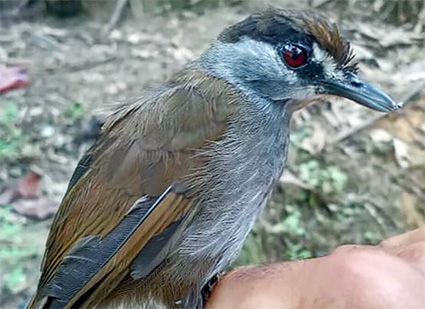
- It has a strong bill, chocolate colouring and distinctive black eye-stripe, its iris is of striking maroon colour.
- It has brown wings and a black stripe across its brow.
- Significance:
- Discoveries like this give hope that it's possible to find other species that have been lost to science for decades or longer.
- More than 150 species of birds around the world are considered "lost" with no confirmed sightings in the past decade.
- Discoveries like this give hope that it's possible to find other species that have been lost to science for decades or longer.
- Protection Status:
- IUCN Red List: Data Deficient

